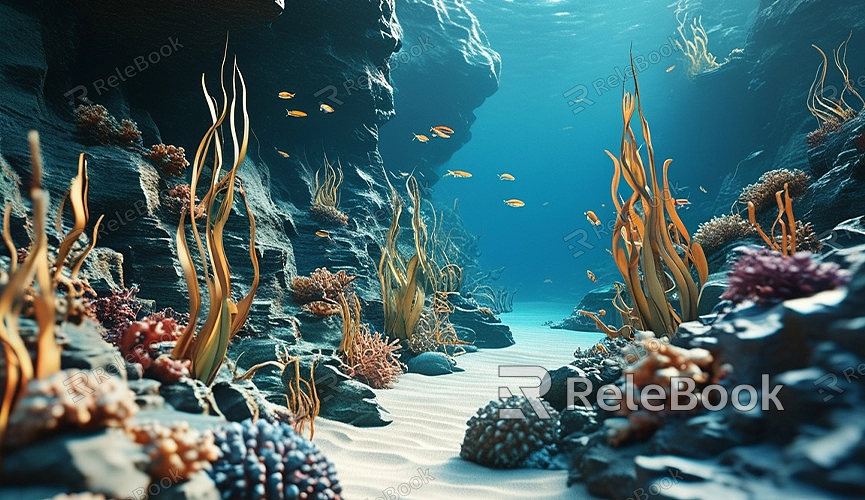How to render environment map on separate layers blender
Rendering is an essential step in 3D modeling and animation, and environment map rendering is particularly important because it adds realistic background and reflection effects to a scene. In Blender, you can separate environment maps and other elements into different render layers for independent processing. Layered rendering not only enhances workflow efficiency but also provides more flexibility during post-production. This article will explain how to render environment maps on separate layers in Blender and share some optimization tips.
Understanding Environment Maps
An environment map is a texture mapping technique commonly used to simulate environments such as skies, buildings, or natural landscapes. It provides lighting and reflections for objects in the scene, increasing the realism of the render. Environment maps are typically 360-degree panoramic images that wrap around the scene to provide a lifelike background.

In Blender, using HDRI (High Dynamic Range Images) as environment maps is quite common. HDRIs offer rich lighting information and bring natural reflections and refractions to objects in the scene, making the rendering results more realistic.
The Benefits of Layered Rendering
When creating complex 3D scenes, rendering different elements separately can greatly simplify post-compositing. For example, you can divide foreground objects, background environments, and lighting effects into different layers and handle them individually during the compositing phase. This not only reduces render time but also gives you more flexibility when adjusting the scene. Layered rendering, especially for environment maps, avoids unnecessary distractions and ensures that each detail can be finely tuned.
Setting Up Layered Rendering in Blender
To achieve layered rendering in Blender, you first need to set up render layers. This step allows you to assign different objects and lighting to each render layer, thereby separating the elements you want to render individually.
1. Create Render Layers: In Blender’s “View Layer” tab, you can add multiple render layers to your scene. Each render layer can contain different object groups or lighting setups. For instance, you can create one layer dedicated to the environment map and another for the foreground objects.
2. Assign Objects and Lights: Within each render layer, you can choose which objects and light sources participate in the rendering. For the environment map render layer, select only the HDRI map and related lights, excluding other objects.
3. Adjust Render Settings: To ensure that the effects of different render layers don’t interfere with each other, you need to enable the “Transparent” option in the render settings. This allows the separation of the foreground and background layers for easier post-compositing.
Rendering the Environment Map
Once you’ve set up layered rendering, you can start rendering the environment map. In Blender, HDRI maps can be added through the “World” settings. First, navigate to the “World” tab in the Shader Editor, select the “Environment Texture” node, and load your HDRI image. Next, adjust the map’s brightness, contrast, and tone to ensure it matches the needs of your scene.
Environment map rendering heavily relies on light reflection and refraction. To achieve the best results, it’s recommended to use the Cycles render engine. Cycles’ ray-tracing technology more accurately simulates how light interacts with the environment, resulting in more realistic rendered images.
If you need high-quality 3D textures and HDRIs while creating models and virtual scenes, you can download them for free from [Relebook](https://textures.relebook.com/). Relebook offers a wide range of premium 3D resources to help you easily build realistic scenes.
Compositing and Post-Processing
After completing the layered rendering, you can enter Blender’s “Compositor” interface for post-compositing. Using compositing nodes, you can layer the different render passes and apply various effects and filters. The biggest advantage of compositing is the ability to adjust the color, brightness, and contrast of each layer independently without affecting the content of other layers.
For example, if the colors of the environment map seem dull, you can adjust the background layer’s hues without altering the rendering of foreground objects. Additionally, you can further control the transparency and edge transitions of each layer using masking nodes, ensuring the final image appears seamless.
Layered rendering of environment maps in Blender offers greater flexibility and control over your 3D work. With well-organized layer settings and post-compositing, you can more easily refine each element, resulting in a higher quality render. If you need high-quality 3D textures and HDRIs for building models and virtual scenes, you can download them for free from [Relebook](https://textures.relebook.com/). If you’re looking for premium 3D models, you can also download them from [Relebook](https://3dmodels.relebook.com/). Relebook provides a wide array of top-tier 3D resources to help you quickly bring your creative ideas to life.

